August 2022
August 31, 2022
No makeup or men for five years
When British dentist Philip Grundy died in 1974, he left the bulk of his estate, slightly over $400,000, to Amelia Whaite, the receptionist at his practice. But with some unusual conditions. He forbid her from wearing lipstick or makeup, or going out with any men, for five years.$400,000 in 1974, adjusted for inflation, would be over $2,000,000 today. So a nice chunk of money.
However, Grunday also made Whaite the sole executor of his estate "with the responsibility to see the will's conditions are kept." So if she didn't follow the conditions was she supposed to self-report herself?

Atlanta Constitution - Mar 17, 1974
I found a forum where residents of Leyland, Lancashire (where Grundy worked) recalled going to his practice. Seems that, in addition to the money, he left behind a lot of traumatized patients. Some typical comments:
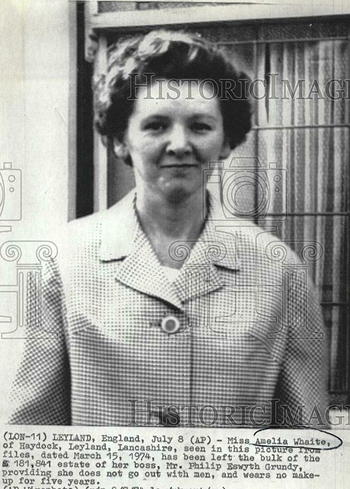
Some more info about Grundy and Whaite from a 1974 Associated Press article:
Four years later, Grundy was accused of addiction to inhaling anesthetic gas and was forbidden to practice for five years.
He resumed his practice in 1971 and built it into a flourishing enterprise with a staff of 14. . .
Miss Whaite now runs the practice, still with a 14-member staff.
Grundy sounds like he was a real piece of work.
Posted By: Alex - Wed Aug 31, 2022 -
Comments (5)
Category: Law, 1970s, Teeth
Artwork Khrushchev Probably Would Not Have Liked 46
Two links to the Wikipedia pages of the Themersons, husband and wife team of avant-gardists.Small essay here.
Posted By: Paul - Wed Aug 31, 2022 -
Comments (0)
Category: Art, Avant Garde, Surrealism, Movies, Twentieth Century
August 30, 2022
Moving the Solar System
In the late 1960s, Caltech astronomer Fritz Zwicky proposed a novel method of space travel. Instead of using spaceships to go to neighboring stars, he imagined moving the entire solar system.His idea was that if we could make one side of the sun release more energy than the other, then we could direct the course of its motion. We could steer it towards whatever destination we wanted, with the Earth in tow. He calculated that we could reach Alpha Centauri in 2500 years.
Details can be found in his 1969 book Discovery, Invention, Research Through the Morphological Approach:
For the purpose of traveling to the nearest stars, Alpha Centauri for instance, at a distance of four light years, rockets do not suffice. A very much more exciting possibility offers itself, however: We remain on the Earth and travel with it as the space vehicle, either alone or with the whole solar system towards our goal. During this journey we may enjoy and use the light from the Sun as always, or if we wish to leave it behind, we can keep warm and provide all of the necessary small and large-scale illumination through the proper use of nuclear fusion energy. Traveling at a speed of 500 km/sec through space, relative to the surrounding stars, we might reach the neighborhood of Alpha Centauri in about 2,500 years.
All of this will become possible once we have mastered nuclear fusion ignition of common materials on the Earth and on the Sun. Physicists in many countries have been attempting during the past fifteen years to induce nuclear fusion reactions in extremely concentrated and high-energy ionic plasmas, without making any use of the release of nuclear fission energy from uranium as it is being used in H-bombs.
Even if these efforts should be successful they would not provide us with any readily usable means for the acceleration of the Sun or of the Earth to velocities of the order of 500 km/sec. I have therefore suggested another approach striving to produce small solid particles with velocities of up to 1,000 km/sec. It is not possible here to go into any details of how this is going to be done. I emphasize only that no fundamental difficulties stand in the way. Particles impacting on dense matter with velocities of the order of 1,000 km/sec will generate the desired temperatures of hundreds of millions of degrees, at which all light elements will be ignited to nuclear fusion reactions.
Launching ultrafast particles against the Sun, local regions on it could be ignited to nuclear fusion. As a consequence of the tremendous release of energy by such reactions, matter would be ejected with velocities of the order of 50,000 km/sec, while the resulting forces of reaction would propel the Sun in the opposite direction. If such processes were applied for a long time, the Sun could eventually be accelerated to the desired velocity with a sacrifice of only a small per cent of its total mass.
Since the planets are held in rein by the Sun's gravitational field, they and the Earth would be carried along on the distant journey. In principle the process and propulsion described could be applied to the Earth alone, which then would detach itself from the solar system and start out on its solitary voyage to the nearest stars.
One of the few analyses of Zwicky's idea that I could find online is at dynamical-systems.org. The author, Oliver Knill, quickly concludes that the idea is completely nuts:
But even if Zwicky's idea could be made to work, what would happen once our solar system reached the vicinity of Alpha Centauri? How close could our sun approach Alpha Centauri before the two systems became gravitationally bound to each other? What kind of chaos would that wreak on the planets and asteroids within our solar system?
Posted By: Alex - Tue Aug 30, 2022 -
Comments (3)
Category: Spaceflight, Astronautics, and Astronomy
Moving Advertisements for Devices and Vehicles
Are you tired of screens at the gas pumps that flash ads? Or perhaps screens on buses and taxis that display same? You can perhaps blame Elias Atherton Lyon, who patented such a notion in 1910.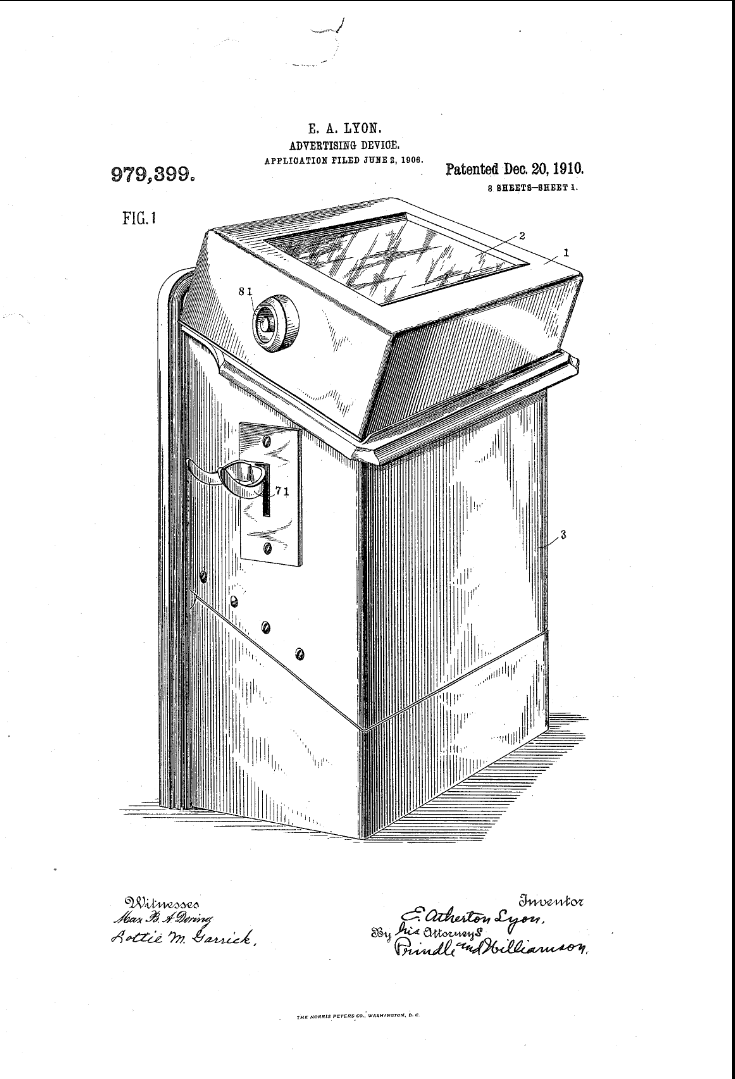
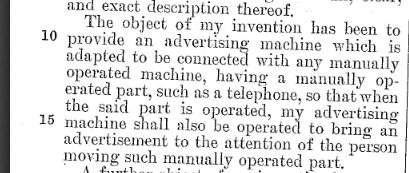
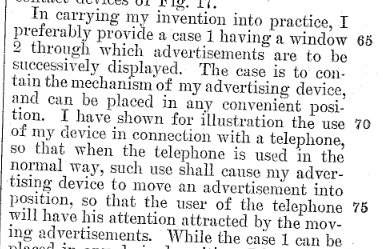
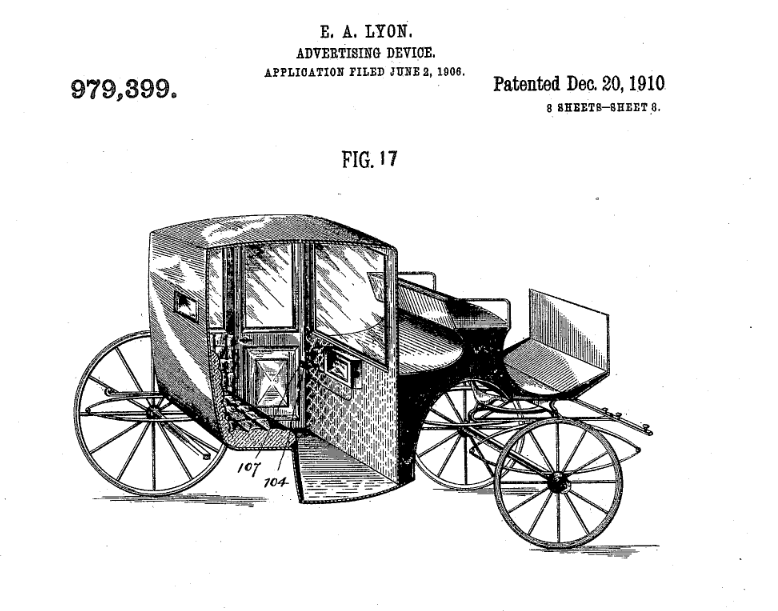
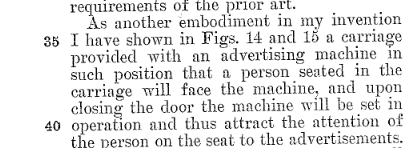
Posted By: Paul - Tue Aug 30, 2022 -
Comments (0)
Category: Inventions, Patents, Advertising, 1910s
August 29, 2022
Knee-Cleaning Foam
They should sell this stuff at home improvement stores, because whenever I do a DIY project I somehow always end up with filthy knees.Available from Japan Trend Shop.


via Book of Joe
Posted By: Alex - Mon Aug 29, 2022 -
Comments (3)
Category: Hygiene, Baths, Showers and Other Cleansing Methods, Skin and Skin Conditions
The Nine LaFalce Brothers
There have been any number of family singing groups. Many pop bands feature two brothers. The Beach Boys added cousins. Sister groups were popular in the forties and fifties. And finally, the famous Trapp Family featured ten children and two parents. But I do not believe any other act than the now-forgotten LaFalces had nine brothers onstage together.
Posted By: Paul - Mon Aug 29, 2022 -
Comments (2)
Category: Family, Music, Twentieth Century
August 28, 2022
Fuel from hazelnut shells
Back in 2000, Dr. Murat Dogru of the University of Newcastle demonstrated that it was possible to extract significant amounts of hydrogen fuel from hazelnut shells.I'd like to imagine that the world of tomorrow will be powered by hazelnut shells and poop gas.
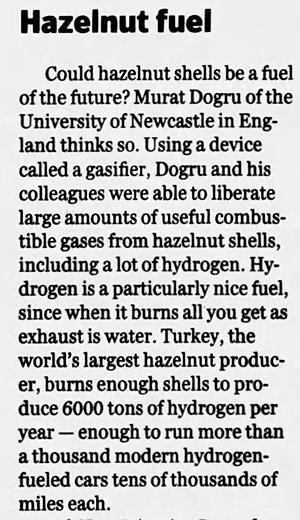
Boston Globe - Dec 26, 2000
I wonder if there's something special about hazelnuts? Or can most nut shells similarly be converted into fuel?
More info: Newcastle University
Posted By: Alex - Sun Aug 28, 2022 -
Comments (1)
Category: Power Generation
Screaming Roomba
Here's an oldie but goodie (24 million views) that you might not have seen before, inspired by Alex's Atomic Vacuum Cleaner post.Caution: many, many swears.
Posted By: Paul - Sun Aug 28, 2022 -
Comments (0)
Category: Anthropomorphism, Domestic, Inventions, Swears
August 27, 2022
Astrochickens
Theoretical physicist Freeman Dyson envisioned our Solar System being explored by "Astrochickens." As described in his 1992 book From Eros to Gaia:Here is a rough sketch of one possible shape that the 2018 spacecraft might take. I call this model the Astrochicken because it is about as big as a chicken and about as smart. It is a product of genetic engineering. It does not look like a chicken. It looks more like a butterfly. It has wide and thin solar sails instead of wings, and a high-resolution spectroscopic imaging system instead of eyes. With its solar sails it flies around the inner solar system as far as the main belt of asteroids. At any one time there will be hundreds of such birds flying, programmed to make specialized observations of Earth, Moon, Sun, planets, and asteroids as well as of the heavens beyond. Other cousins of the Astrochicken will have legs for landing and hopping around on asteroids, or solar-powered ion-jet engines for exploring the outer solar system as far as Pluto.
Wikipedia notes: "As a noted author of essays on the possibilities of science in the future, Dyson's theories, such as the Dyson sphere and the Dyson tree, have become popular in the scientific and science fiction communities. The more whimsically named 'Astrochicken' has not achieved this same level of fame."
Posted By: Alex - Sat Aug 27, 2022 -
Comments (1)
Category: Spaceflight, Astronautics, and Astronomy, Yesterday’s Tomorrows
The Pickle Brothers
Their Wikipedia page.
Posted By: Paul - Sat Aug 27, 2022 -
Comments (0)
Category: Television, Pickles, 1960s, Comedians
| Get WU Posts by Email | |
|---|---|

| Who We Are |
|---|
| Alex Boese Alex is the creator and curator of the Museum of Hoaxes. He's also the author of various weird, non-fiction books such as Elephants on Acid. Paul Di Filippo Paul has been paid to put weird ideas into fictional form for over thirty years, in his career as a noted science fiction writer. He has recently begun blogging on many curious topics with three fellow writers at The Inferior 4+1. Chuck Shepherd Chuck is the purveyor of News of the Weird, the syndicated column which for decades has set the gold-standard for reporting on oddities and the bizarre. Our banner was drawn by the legendary underground cartoonist Rick Altergott. Contact Us |

